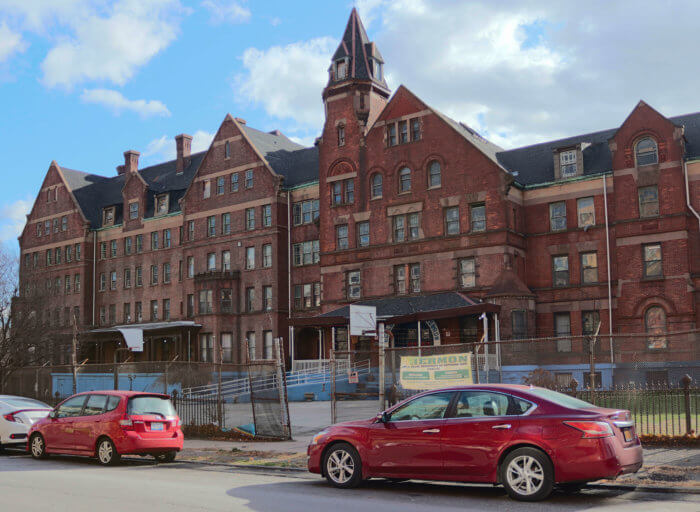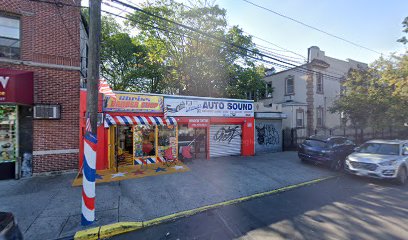City landmark gurus sent a scheme to develop the backlot of a historic Crown Heights school back to the drawing board Tuesday, with a majority of commissioners in agreement that the plan as it exists is woefully out of context with the historic district.
The plan, which would allow developer Hope Street Capital to build a 180-unit building on land owned by the Northeast Conference of the Seventh Day Adventist Church, does not take into consideration its low-scale surroundings and is too flashy for the storied enclave, members of the Landmarks Preservation Commission said during a Nov. 17 meeting.
“It’s very inventive, but perhaps it’s almost too inventive for the context around it,” said Commissioner Frederick Bland. “It’s a little too architecturally suave.”
The current proposal for 920 Park Place is as-of-right within the current zoning of the area, but needs approval from the Commission to build in the Crown Heights North landmarked district. The project has faced overwhelming opposition from neighbors in the surrounding community, who charge that the project would eliminate green space, cut off views of the historic Methodist Home for the Aged building, and defile one of the few majority-Black landmarked districts in New York City, and in early October, Community Board 8’s Land Use Committee denied the developers’ requests for a Certificate of Appropriateness 14-2.
The Northeast Conference claims they need the development to bankroll repairs to the dilapidated historical building, while neighbors, who have circulated a petition against the project that garnered over 6,000 signatures, have suggested they apply for grants instead.
Landmarks commissioners on Tuesday were sympathetic to the concerns of community members, and were largely critical of the proposal’s design as it currently stands, with the seven-story building taking over the entire block of Sterling Place between New York and Brooklyn Avenues.

“It’s exactly the wrong architecture for this site,” said Commissioner Michael Goldblum.
Others implied they would be more likely to approve a plan that allowed for more open space on the block and preserved some of the campus feel that currently exists on Sterling Place.
“What I think is really important about this site and important to retain are the corners,” said Commissioner Adi Shamir-Baron. “Absolutely the New York and Sterling corner needs to be open, without a question.”
It is likely that a Certificate of Appropriateness will eventually be granted to a revised plan for the project as is usually the case with developments that go before the commission. Commissioners also implied that they believe the site can be developed but that the proposed building as it exists is out of context, and are more likely to approve a smaller development.
“This site can sustain a substantial amount of development but this is not it,” said Commissioner John Gustaffson.






















